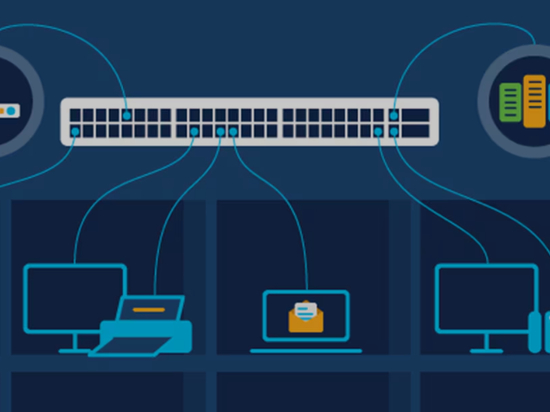
#Industry News
Exploring Wi-Fi Cards and Their Impact on Industry 4.0
Exploring Wi-Fi Cards and Their Impact on Industry 4.0: Enhancing Connectivity for Smarter Manufacturing
Exploring Wi-Fi Cards and Their Impact on Industry 4.0
In today's world, almost all industries benefit from wireless technologies. With the rise of remote mobile devices, IoT, and IIoT, many applications cannot rely on wired connections. Wireless technologies provide fast internet connectivity and enable machine-to-machine communication, which is vital for advanced mobile technologies. Therefore, many industries now use wireless connections or network cards to facilitate connectivity for various applications.
What is a Wireless Card?
A wireless card or wireless network card is a terminal device that provides internet connectivity over a wireless local area network (WLAN). When attached to an industrial computer, the wireless card ensures seamless internet access. As Industry 4.0, Industrial Internet of Things (IIoT), and edge computing continue to evolve, the role of wireless cards in providing uninterrupted connectivity is becoming increasingly important.
How Do Wireless Cards Work?
Wireless network cards function by transmitting data wirelessly via radio frequencies. These cards initially connect to an access point or wireless router that receives data from the internet through a wired connection. The router then converts this data from binary form to radio waves. Once these radio waves are broadcast, the wireless card in the industrial computer receives the signal and converts it into a format the computer can understand.
How to Install a Wireless Network Card?
1. Choose a Suitable Connector
Wireless network cards come with various connectors, so it's important to ensure compatibility with your computer and operating system. Most cards fit into mSATA, mPCIe, or M.2 slots. Ensure both the card and the motherboard have the necessary connections.
2. Ensure Driver Availability
Having the appropriate drivers to support the wireless network card and the operating system on industrial computers is crucial. For example, Premio offers wireless cards compatible with both Windows and Linux. Additionally, ensure the network source and wireless network card are matched to obtain full bandwidth and network features.
3. Check Bluetooth Support
Verify if the card supports Bluetooth, which is necessary for connecting wireless peripherals and other devices. Bluetooth versions are backward compatible, allowing connections between different versions.
Types of Wireless Card Slots
Wireless cards can connect to various slot types, including PCIe, mPCIe, mSATA, and M.2. Here is a brief overview:
PCIe: An industry standard that allows connected devices to communicate with the computer through a slot.
mPCIe and mSATA: Small form factor slots designed for devices with space constraints, with mPCIe used for expansion and mSATA for storage.
M.2: A next-generation slot replacing mPCIe and mSATA, offering higher transfer speeds up to 4 GB/s for NVMe interfaces with a smaller form factor.
Usage Examples of Different Wireless Network Slots
Wi-Fi Cards: Allow computers to connect to wireless networks.
Bluetooth Cards: Enable computers to receive Bluetooth signals for connecting various devices.
Modem Cards or SIM Card Slot Cards: Provide a slot for SIM cards from mobile operators, enabling the computer to access voice and data services.
Zigbee Technology
Zigbee is a wireless network technology designed for low-cost, low-data-rate, and low-power wireless personal area networks (WPANs). Built on the IEEE 802.15.4 standard, Zigbee supports short-range communication up to 100 meters, making it ideal for industrial and factory automation.
Advantages of Wireless Cards
1. Flexibility
Wireless networks increase efficiency, mobility, and productivity compared to wired networks, providing real-time access to information anywhere and anytime.
2. Shock and Vibration Resistance
Wireless network systems minimize the risk of loose connections and cable damage by reducing cable usage. Wireless cards are designed to withstand high levels of shock and vibration.
3. Efficiency
Wireless networks facilitate faster data communication and make it easy to update or upgrade the network to adapt to new configurations.
4. Cost-Effectiveness
Wireless networks are cheaper and easier to install compared to wired networks. Despite higher initial investment, long-term costs are lower due to the lack of extensive cabling.
5. Wider Coverage
Wireless networks can cover areas that wired networks cannot reach and can handle more users without being limited to specific connection points.




